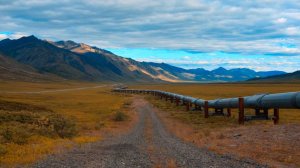Solutions to the challenges of pipeline monitoring are being found through the use of sensors on drones, also known as unmanned aerial vehicles, or UAVs.
The magnitude of pipelines makes it difficult to identify leaks and prevent damage to the pipeline or to the environment. Oil pipelines are vast infrastructures, often traversing challenging terrains such as marshlands, hot deserts, frozen regions and even areas of conflict.
Pipelines are monitored according to various parameters, such as pipeline pressure and temperature, diameter of a pipeline rupture, layout of pipelines and type of fluid transported, amongst others.
Although pipeline operators carry out regular inspections of the equipment, hidden leaks may result in liquid hydrocarbons seeping into the soil and ground water.
Current methods of pipeline monitoring include physical patrols, pressure control monitoring and the use of ultrasonic flow meters. However, these methods have distinct disadvantages and limitations, which drone and sensor technologies aim to overcome.
UAV-based sensors allow for the simultaneous inspection of pipelines across various criteria. In addition, the reduced weight of UAVs reduces safety risks and ensures continuous scanning.
UAVs are able to scan pipelines over long distances and in remote regions. They can fly close to the ground at night, follow a precise flight path, have lower operational costs and are more environmentally friendly than traditional methods of pipeline monitoring.
The UAV platform selected depends on the requirements and type of data to be collected.
Drone and sensor functionalities include the use of high-resolution colour-imagery to detect damage and vegetation affecting the pipeline; multispectral imagery to monitor environmental effects and to detect gas leaks; light detection and ranging, or LiDAR, remote sensors to create three dimensional digital models to detect changes in a pipeline’s structure over time; and the use of red, green and blue, or RGB, imagery and thermal overlay to predict structural weaknesses and possible leaks.
In addition, drone and sensor technologies can be used in digital photogrammetry to monitor hydrocarbon pipelines laid above and underground.
The spectrometric method uses multispectral and hyperspectral sensors to detect and identify hydrocarbon leaks in a liquid or gaseous state and the geothermal surveying method uses thermal imaging cameras to identify hydrocarbon gases interacting with the infrared spectrum.
Airborne Drones, based in Cape Town, South Africa, recommends that end-users first identify the type of data to be collected, in order to identify the UAV platform and capabilities required. The company manufactures high-end, long-range surveillance UAVs.
Available UAV platforms include a small quad-copter, used to scan subsurface pipelines and for the collection of detailed information over medium and small areas. Another option is the larger, fixed-wing UAV that can meet greater requirements but provides lower resolution and detail.
Recent advances in technology have seen the development of more sensitive methane-detection sensors on UAV platforms that can get closer to the source of pipeline gas leaks.
EMAIL THIS ARTICLE SAVE THIS ARTICLE
To subscribe email subscriptions@creamermedia.co.za or click here
To advertise email advertising@creamermedia.co.za or click here













